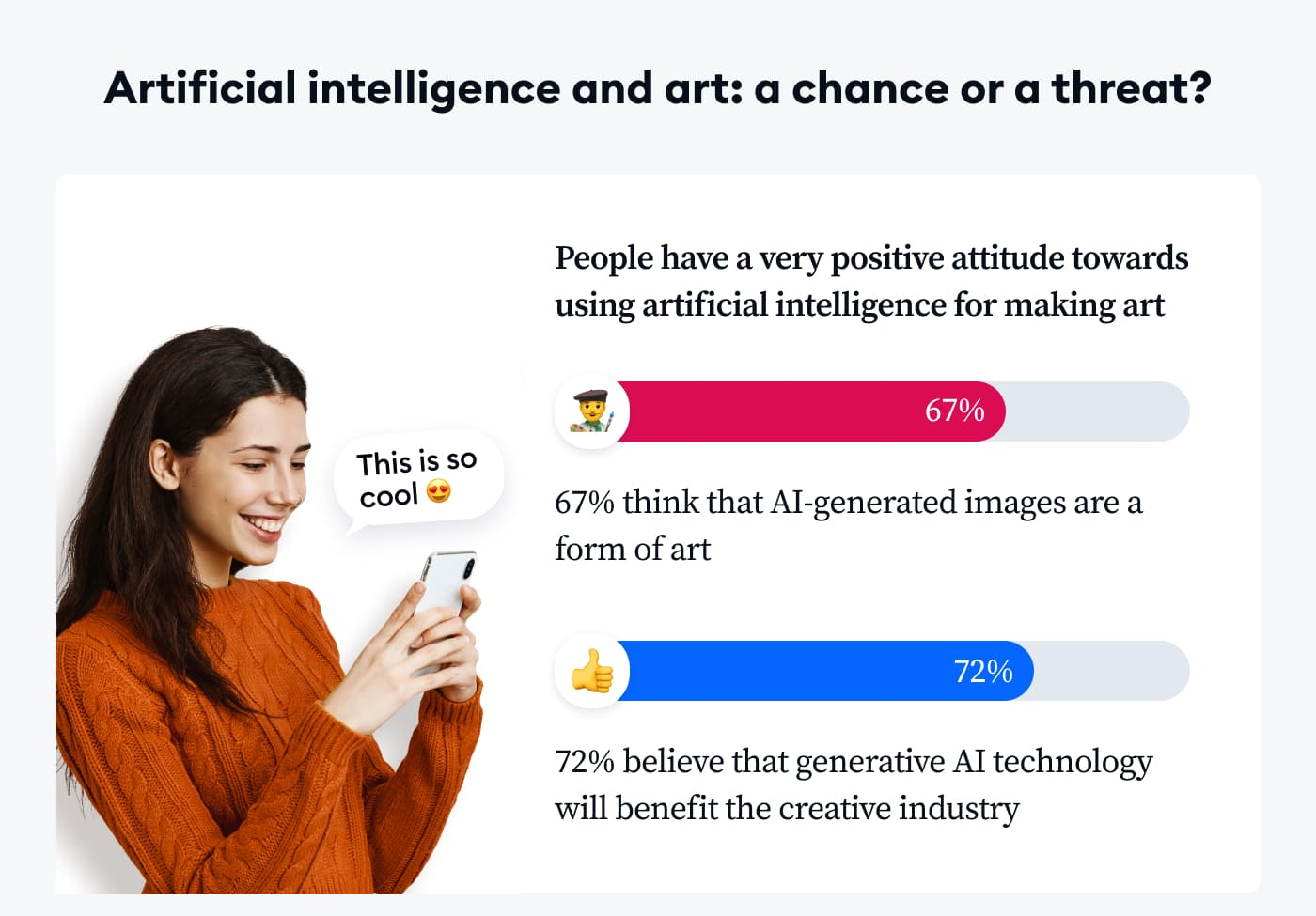With AI-based art rising in popularity nowadays, the question is being raised: will AI overcome artists and endanger our artistic sensibilities?
To that, my response is: has anyone seen the AI-based art memes floating around on the internet? I genuinely don’t think putting artists out of jobs seems to be the internet’s main concern nowadays. Of course, then there’s the deep-fake argument: that AI-art can imitate people getting into incriminating scenarios. To that I respond by saying that such technology has been accessible for over half a decade now, how is AI art the reason people are scared now? Perhaps I come off as unnecessarily vehement in my defense of the new technology (which isn’t even new technology, it’s just more accessible and trendy nowadays).
The reason is that any new tech is immediately branded as being harmful and dangerous, much like how cavemen probably responded to discovering fire. The difference between us and cavemen, however, is that the former’s supposed to have enough intuition and know-how to separate mass online hysteria from the technology. Art-based AI might have issues, especially with NFT forgery becoming popular (who would have guessed?), but many of the problems people seem to be gunning for aren’t necessarily going to be them; at least not anytime soon.
Let’s, in turn, take a look at what benefits AI art could provide to the general populace. First of all, it turns art-making into a more accessible hobby and allows individuals to express themselves more. A Tidio survey revealed that 25% of respondents saw easy conceptualization of ideas as a major plus point for the tech. 17% even labeled AI art as a good way of allowing self-expression within individuals. Naturally, people are rebutting the arguments by stating that by allowing AI art, actual artists are being undermined and the value of knowing how to draw or paint is being diminished. I have a few rebuttals of my own to such arguments: first off, similar arguments were presented when digital art was popularized, and I don’t see anyone complaining now; secondly, AI can only attempt to emulate, not perfectly encapsulate, a user’s input, which is something only a human mind can adapt to best; finally, AI art would still need to be printed out on canvas, giving real-life painters and artists a break since their work still has merit.
The DALL-E2 and Crayon AI models were used as a measuring stick for how well the Tidio respondents could distinguish between AI and human art. Results were relatively mixed, with the sample population more or less correctly identifying human artists, but having divisive results over AI art. Crayon was immediately found out as being non-human, with 85% of respondents identifying it as AI. DALL-E2, however, was identified by more participants as being human than the two actual human artists who were a part of the study. Of course, with such a limited pool of art, and a non-peer-reviewed study, more work needs to be conducted.
Read next: Climate Tech Funding At A Glance: What Role Does Big Tech Play In Sustaining A Greener Future?
by Arooj Ahmed via Digital Information World


No comments:
Post a Comment